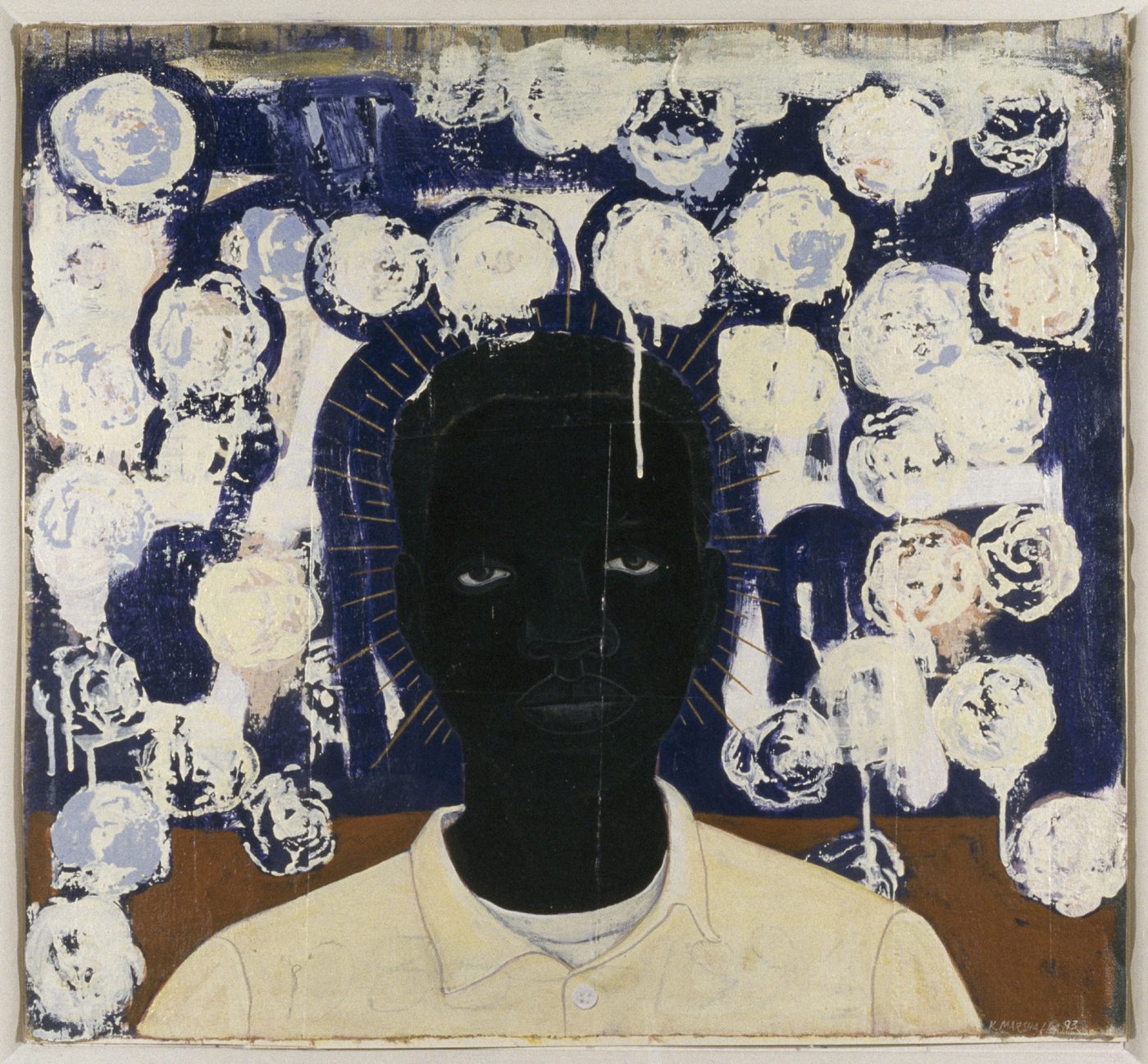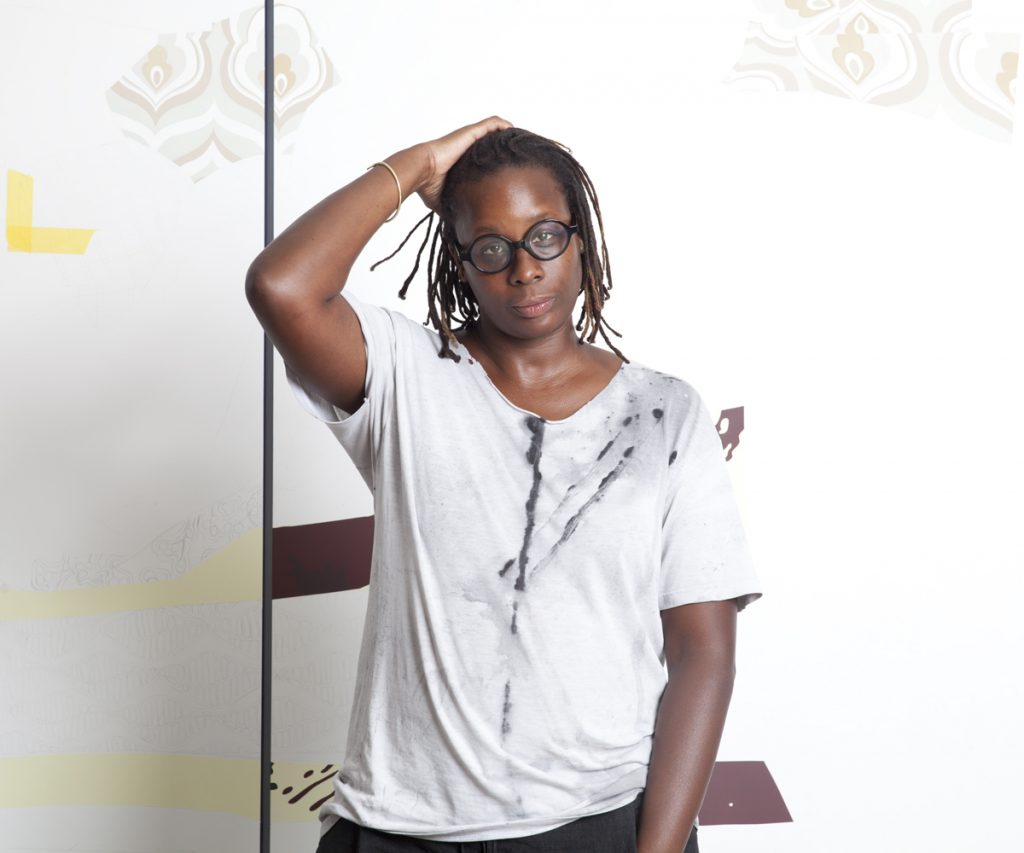Object of the Week: The Lost Boys
Artist Andy Warhol said, “Everybody has their own America, and then they have the pieces of a fantasy America that they think is out there, but they can’t see…” Before getting started, it’s important to acknowledge the America that I live in: I am a white, cis-gendered, able-bodied woman who was born in the northeast United States during the 1980s. I am looking at a work of art created by Kerry James Marshall: a Black, cis-gendered, able-bodied man who was born in the segregated South during the 1950s. Both Marshall and I are artists and educators, but sadly I don’t have a MacArthur Genius Award or paintings in any major museums. I’ll be approaching this work of art using my own lens and the same facilitation strategy I use for my (now virtual) tours of SAM’s collection: Visual Thinking Strategies (VTS).[1] VTS is used to spark dialogue and empower people to approach a work of art using their own observations and experiences, asking three simple questions. I encourage you to follow along and ask yourself these questions, noticing where our backgrounds may overlap or differ.
The first question of VTS is, “What’s going on in this picture?” This is a portrait of a young boy––his skin is a rich, dark black matte, and his features are defined by white outlines. He has heavy-lidded, almost tired eyes and his mouth is neutral, conveying an expression that is difficult to read. Radiating outward from his head are straight thin lines, evocative of a halo. The background is divided horizontally: the bottom third is a golden color, almost a desert landscape; the top is a deep blue overlaid with white shapes, bringing to mind a sky with clouds, though closer inspection reveals that the organic shapes are actually white roses. The paint looks to be hastily applied, as evidenced by the drip down the forehead of the young man. The drip, although white, mimics blood, similar to depictions of Christ or another martyr and links this to religious iconography.
The next question, “What do you see that makes you say that?” challenges our assumptions and biases. As we conclude Black History Month after a year of increased visibility in mainstream media of the racial inequities for Black Americans, I’ve seen myself get caught up in the imagery of Black trauma, recounting video and photos of the brutal murders of Brianna Taylor, George Floyd, and Ahmaud Aubrey. I start to wonder if calling this Black figure a martyr is Marshall’s intention, or my own prejudice? Marshall’s own words confirm that I need to dig deeper: “I paint things I care about. It would have been easy to represent these places (and situations) as zones of hopelessness and despair, but I know they’re more complex than that.”
As I read the label, the curatorial voice chimes in and indicates that Marshall is memorializing Black boys who have lost their lives, stating that the leading cause of death for young, Black men is homicide. In fact, when comparing statistics among racial groups, Black youth (0-18 years old) are seven times more likely to die by homicide than white youth.[2] As an educator, I also can’t help but think about the school-to-prison pipeline and the fact that Black students are three and half times more likely than their white classmates to be suspended or expelled, and that Black youth disproportionately make up those youth incarcerated in juvenile detention centers.[3]
The final question is, “What more can we find?” The language here is intentional—creating meaning is a generative process. This is where, if I were actually speaking to people, I would hear different perspectives and my understanding of a work would evolve. However, when at home, I take this question as an invitation to start researching. After procrastinating on this blog post, watching hours of interviews with Marshall, I was especially struck by one quote by the artist: “If you’re constantly being reminded of the ways in which your history and your narrative as a people were rooted in loss and decay, then you’re in deep trouble. Once you make a certain kind of peace with the past, then you should be completely oriented towards speculation about the future.”[4]
I challenge my initial response to this work. I start to see glimmers of hope in the white roses— symbols of youth, innocence, and new beginnings. I begin to unpack the ways that this painting may embody Afrofuturism, the cultural movement that explores the intersection of the African diaspora with technology, science, and liberation. A few Google searches quickly link the Eurocentric religious iconography that I saw in my art history classes to contemporary icons such as Solange Knowles’s appearance on SNL
In asking, “What more can we find?” we open ourselves up to dialogue and start to imagine a different world, a different America––maybe one that’s fantasy, or maybe one that could be our reality? Marshall’s work gives me hope and I’m reminded of the contemporary author and educator bell hooks’s words, “The function of art is to do more than tell it like it is––it’s to imagine what is possible.”
– Kelsey Donahue, SAM Assistant Manager for Gallery Learning


